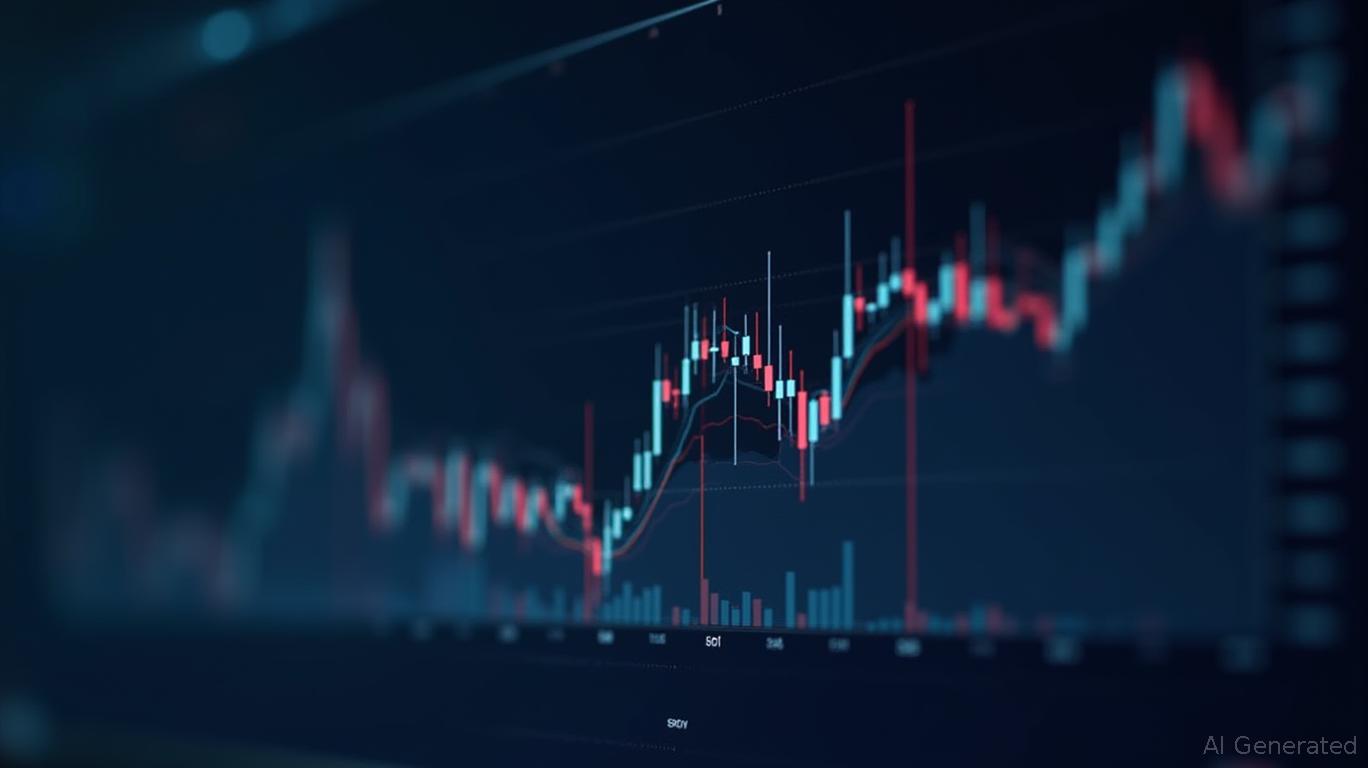Navigating Tech Turbulence: How Policy and Value Plays Are Shoring Up US Equity Resilience
The U.S. equity market has weathered a perfect storm of disruptive forces in 2025: the emergence of DeepSeek AI's cost-efficient models, evolving Sino-U.S. trade dynamics, and a Federal Reserve holding the line on rates. Yet beneath the surface volatility, a clear opportunity is emerging: a sector rotation toward undervalued industries and defensive stocks, buoyed by low inflation and patient monetary policy. Investors should pivot to sectors like industrials,
, and equal-weighted equity indices, while leveraging the resilience of tech leaders like Microsoft and hardware enablers like Applied Materials.The Fed's Steady Hand Anchors Equity Markets
The Federal Reserve's decision in June to keep rates steady—despite expectations of a cut—sent a critical signal: the U.S. economy remains resilient. With unemployment at 4.2% and core inflation tame (2.4% year-over-year), the Fed's “data-dependent” stance gives markets a stable base. The Summary of Economic Projections (SEP) reinforced this by forecasting no rate hikes or cuts through 2025, a stark contrast to earlier fears of aggressive tightening.
This stability matters. It reduces the risk of a liquidity crunch and allows investors to focus on fundamentals. For sectors like industrials and financials, which thrive on steady growth and moderate borrowing costs, this is a tailwind.
China's Stimulus Fuels Global Growth—and U.S. Opportunities
While headlines focus on U.S.-China trade tensions, China's Q2 fiscal package—a 4% deficit expansion, RMB 5.66 trillion in spending, and RMB 1.3 trillion in special treasury bonds—is quietly reshaping global trade. The focus on infrastructure, equipment modernization, and housing inventory cleanup creates demand for U.S. exports in sectors like semiconductors, industrial machinery, and construction materials.
Applied Materials (), a leader in semiconductor manufacturing tools, exemplifies this opportunity. While the AI disruption has unnerved some tech investors, Applied's role in enabling next-gen chip production—critical for both U.S. and Chinese tech firms—remains irreplaceable. Its stock, down 15% YTD on broader tech sector fears, now trades at 15x forward earnings, a discount to its 5-year average of 20x.
DeepSeek's Disruption: A Catalyst for Value Rotation
The $1.5 trillion tech selloff triggered by DeepSeek's emergence has created a buying opportunity in undervalued sectors. While NVIDIA's valuation cratered (down 589 billion USD), the broader market is pricing in overhangs. This is where sector rotation shines:
- Financials: Banks like JPMorgan and Goldman Sachs, which benefit from a flattening yield curve and steady corporate lending, now trade at 10–12x earnings—a decade-low discount to growth stocks.
- Industrials: Caterpillar and Boeing, tied to China's infrastructure and aviation recovery, offer stable dividends and exposure to global reflation.
- Equal-Weighted ETFs: The S&P 500 Equal-Weight ETF (RSP) has outperformed the cap-weighted S&P 500 by 5% YTD, as smaller companies in industrials and materials rebound.

Tech's Silver Lining: Microsoft's Diversified Might
Not all tech stocks are vulnerable. Microsoft (), with its Azure cloud dominance, enterprise software, and AI investments like the $500B OpenAI partnership, is insulated from DeepSeek's direct competition. Its 20%+ margins and $50B annual free cash flow make it a defensive tech play. Even as AI models proliferate, Microsoft's scale and ecosystem integration (e.g., Teams, LinkedIn) ensure it remains a must-own stock.
Defensive Plays: Utilities and Healthcare Hold Steady
For investors seeking insulation from volatility, sectors like utilities and healthcare offer 3–4% dividend yields with low beta. Regulated utilities (e.g., NextEra Energy) and healthcare providers (e.g., UnitedHealth) are recession-resistant and benefit from demographics and inflation hedges.
The Bottom Line: Rotate to Value, Stay Long-Term Bullish
The combination of Fed patience, China's stimulus, and sector-specific opportunities creates a compelling case for rotating out of overvalued growth stocks and into:
- Applied Materials (AMAT): Leverage its semiconductor exposure and valuation discount.
- S&P 500 Equal-Weight ETF (RSP): Captures the rebound in mid-cap industrials and materials.
- Microsoft (MSFT): A tech stalwart with diversified earnings.
While geopolitical risks and AI disruptions remain, the macro backdrop—low inflation, policy support, and global reflation—supports a bullish stance. As the market shakes out the AI winners and losers, value and defensive plays will anchor the next leg of gains.
Investors who pivot now could capitalize on a market poised to reward resilience—and foresight.

Comments
No comments yet